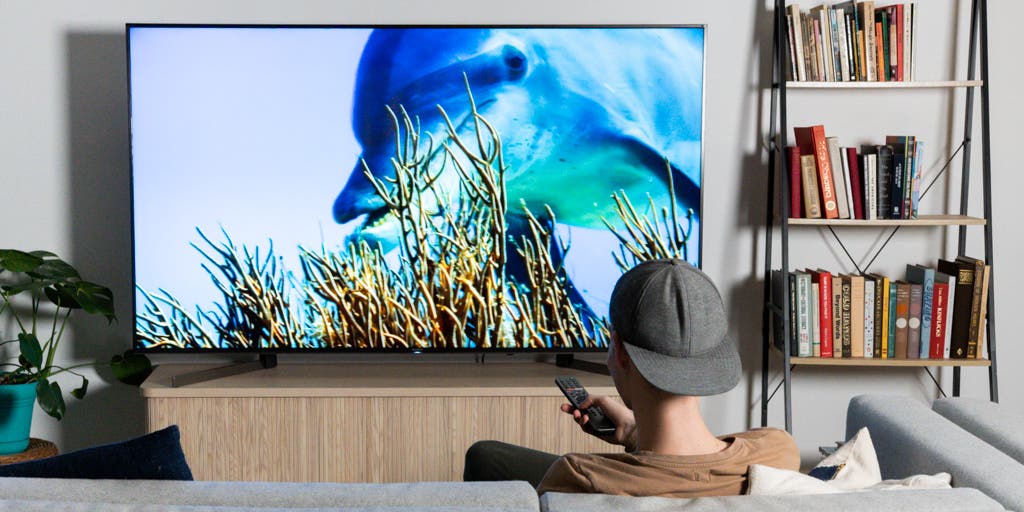LCD TV screens are a common sight in many households. They offer high-quality images and are relatively affordable. However, one issue that can arise with LCD screens is the appearance of dark shadows on the TV screen. These shadows can be caused by a variety of factors, but they are usually a temporary problem that can be easily fixed. In this article, we will explore some of the causes of dark shadows on TV screens and how to fix them.
Clean the Screen
One of the most common causes of dark shadows on TV screens is a dirty screen. Dust and dirt can accumulate on the screen over time, causing shadows to appear. To fix this issue, clean the screen with a soft, dry cloth. Avoid using harsh chemicals or abrasive materials, as they can damage the screen. Be gentle when cleaning the screen to avoid scratching it.
Adjust the Backlight Settings
Another potential cause of dark shadows on TV screens is incorrect backlight settings. If the backlight is too bright or too dim, it can cause shadows to appear. Adjust the backlight settings to find the optimal level for your TV screen. This may require some trial and error, but it is a simple fix that can improve the quality of your TV viewing experience.
Turn the Light Sensor Setting On
Most LCD TVs come with a light sensor setting that adjusts the backlight based on the ambient light in the room. This setting can help to reduce the appearance of dark shadows on the TV screen. If your TV has this setting, turn it on and adjust the sensitivity to find the optimal level for your room.
Change the Power-Saving Setting to Low or High
Some LCD TVs have a power-saving setting that can affect the brightness of the screen. If this setting is set too low, it can cause dark shadows to appear on the screen. Try changing the power-saving setting to either low or high and see if this improves the quality of the image.
Loosen the Screws on the Back of the TV
If none of the above fixes work, it may be necessary to loosen the screws on the back of the TV. This can help to relieve pressure on the LCD panel, which can sometimes cause shadows to appear. Be careful when loosening the screws, as they are delicate and can easily be damaged.
Support the Back of the TV
If none of these fixes work, it may be necessary to provide additional support to the back of the TV. This can be done by placing a small piece of foam or rubber between the TV and the wall to relieve pressure on the LCD panel. Be careful when doing this, as too much pressure can cause the screen to crack.
Dark shadows on TV screens can be caused by a variety of factors, but they are usually a temporary problem that can be easily fixed. By following the tips in this article, you can improve the quality of your TV viewing experience and enjoy your LCD TV screen to the fullest.

Causes of Dark Shadows on TV Screens
A dark shadow on a TV screen can be caused by image retention or burn-in. This occurs when an image is displayed on the screen for a prolonged period of time, causing individual pixels on the LCD screen to become temporarily fixed with a specific color. This can result in a dark shadow or ghost image appearing on the screen. Some common causes of image retention or burn-in include leaving static images on the screen for extended periods of time, such as news tickers or video game huds. Other factors that can contribute to image retention or burn-in include high contrast and brightness settings, as well as high temperatures and humidity levels. It is important to take preventative measures, such as adjusting the settings on your TV and using screen savers, to avoid image retention or burn-in and maintain the quality of your TV screen.
Investigating the Cause of a Shadow on a Smart TV
The shadow on your smart TV may be caused by a phenomenon known as image retention or burn-in. This occurs when the pixels in the panel become damaged and develop a memory for the colors they are displaying. As a result, your TV will begin to display only those colors, developing a shadow of the sill image even after you remove the image.
This issue can be prevented by taking some simple precautions. Firstly, it is important to avoid leaving your TV on a still image for more than half an hour. This will help prevent the pixels from becoming damaged and developing a memory. Additionally, it is a good idea to vary the content you watch on your TV and avoid displaying static images for extended periods.
The shadow on your smart TV may be caused by image retention or burn-in, which can be prevented by avoiding still images for long periods and varying the content you watch on your TV.
Fixing the Dark Area on a TV
To fix the dark area on your TV, you can try a few different things. First, check if there is any debris or dirt on the screen. If so, turn off your TV and unplug it from the power source, then use a clean, dry microfiber cloth to gently wipe the screen in circular motions. If this doesn’t work, the dark area may be caused by dead pixels or stuck pixels. Dead pixels cannot be fixed, but stuck pixels can sometimes be fixed by running a pixel refresh program on your TV. Check your TV manual to see if it has this feature. Another possibility is that the backlight on your TV is malfunctioning. In this case, you may need to contact a professional for repair or replacement.
Conclusion
Taking care of your TV screen is crucial to ensure its longevity and performance. Avoid leaving still images on the screen for extended periods of time to prevent image retention or burn-in. Additionally, cleaning the screen regularly with a dry microfiber cloth can help remove debris and prevent the formation of black spots. Adjusting the backlight settings, turning on the light sensor setting, and changing the power-saving setting can also help maintain the quality of your TV screen. By following these tips, you can enjoy clear and vibrant images on your TV for years to come.







